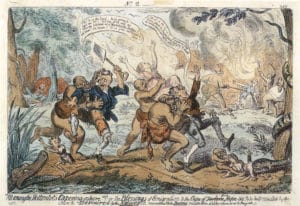A study of the manpower implications of small business financing
by Joseph Debro
A 1968 book-length report, titled “A Study of the Manpower Implications of Small Business Financing: A Survey of 149 Minority and 202 Anglo-Owned Small Businesses in Oakland, California,” was sent to the Bay View by its author, Joseph Debro, prior to his death in November 2013, and his family has kindly permitted the Bay View to publish it. The survey it’s based on was conducted by the Oakland Small Business Development Center, which Debro headed, “in cooperation with the small businessmen of Oakland, supported in part by a grant, No. 91-05-67-29, from the U.S. Department of Labor, Manpower Administration, Office of Manpower, Policy, Evaluation and Research.” Project co-directors were Jack Brown and Joseph Debro, and survey coordinator was Agustin Jimenez. The Bay View is publishing the report as a series. A prolog appeared in the December 2013 Bay View, Part 1 in January 2014, Part 2 in February, Part 3 in April, Part 4 in May, Part 5 in June, Part 6 in August, Part 7 in October, Part 8 in November, Part 9 in January 2015 and this is Part 10 of the report.
The Mexican American as laborer and entrepreneur (continued)

During this same period, another major change was taking place. The Southern gold mines were running out, and quartz mining filled the vacuum. Wages by the summer of 1851 were $20 and $30 per week including board; now a new type of miner was needed, one who would work for wages. Yankees in California preferred to remain independent in the hopes of becoming owners of rich mines rather than working for others. Thus quartz mining fell to Mexicans and Chileans, along with large numbers of Peruvians who came to California in order to escape the ravages of revolution in their homeland in 1851 and 1852.
Thus, the Latin American and particularly the Mexican came to be identified with the beast of burden, the man who accepted the cast-off jobs requiring muscle rather than brain power, the early wage earner without benefit of unionization or other forms of labor protection. Those who were opposed to legislation against Mexicans, becoming so severe as to encourage their leaving in great numbers, argued that these people provided an important source of cheap labor, that they performed as many undesirable tasks as Negroes and Orientals and that they embodied the virtues of being willing, patient, hardy “hewers of wood and drawers of water to American capital” (Colton, Walter, 1850:368).
This image received reinforcement from events taking shape in California agriculture, wherein the struggle of native Mexican Californians to keep their lands, which in many cases had been in their family for generations, was to play a determining role in adapting to American society. Prior to the American conquest of California, most agrarian holdings were in the form of large ranches. In order to insure adequate grazing land, cattle holdings of up to 50 thousand acres were neither unusual nor excessive.
The 9th Article of the Treaty of Guadalupe Hidalgo assured inhabitants of California that they would be “maintained and protected in the free enjoyment of their liberty and property,” so these Californianos assumed that the new American regime would obligate itself to confirm land grants issued previously by the Spanish and Mexican governments. Article 9 was violated by the Land Act of 1851, which allowed the breakup of these holdings and the rights of American squatters to possession of lands held by “greasers.”
The Latin American and particularly the Mexican came to be identified with the beast of burden, the man who accepted the cast-off jobs requiring muscle rather than brain power, the early wage earner without benefit of unionization or other forms of labor protection.
American settlers did not understand the need for large land holdings, saw them as excessive and hoggish, and were spurred on by their racial prejudices against Mexicans whom they saw as descendants of the Spanish and, since the Spanish had Moorish blood, thus Hottentots at the very least (Morefield, 1955:35). The enforcements of the Land Act terms and the interpretations of claims and counterclaims over disputed properties were both legalistic and such long, involved and expensive procedures, that the Californians of Mexican and Spanish descent lost out once more. They were required to show written proof of possession, which was generally quite difficult because of the laxity of previous Mexican officials.
In addition to the legal, quasi-legal and unconstitutional devices for wresting land from Californians, another spontaneous process was underway to insure almost complete transfer to Americans. Californians practiced Spanish and Mexican customs of dividing property among heirs. Women who received a share often married Yankees, thereby passing land to them. Perhaps just as often, Latin women squandered their possessions through mismanagement. Thus, within a few years after California became a state, most Californianos were uprooted from the soil, the landed gentry disappeared, and their destiny as wage laborers and dependent agricultural workers was sealed.
The prevailing Anglo opinion of Californians of Spanish descent certainly had crystallized early, as an account from 1855 reveals (Soulé, et al, 1855:471-2):
“Over the whole of California there may be probably about 20,000 persons of Spanish extraction; and in San Francisco alone, some 3,000 … (of these latter) few … are native Californians. Perhaps one-half … are Mexicans and one-third Chileans. The remaining sixth consists of Peruvians and natives of Old Spain and of parts of Spanish America other than Mexico, Chili and Peru.
“The Hispano-Americans, as a class, rank far beneath the French and Germans. They are ignorant and lazy, and are consequently poor. A few of their number may have a high social standing in the city, while some more bear a respectable position. For these there is one page of a French tri-weekly newspaper written in the Spanish language.
“It is not of them, nor of the few native Californians, who are gentlemen by nature, that we speak, but of the great mass of the race. Many of the Chileans are able both to read and write; few of the Mexicans can. Both peoples, when roused by jealousy or revenge, as they often are, will readily commit the most horrid crimes.
“In proportion to their numbers, they show more criminals in the courts of law than any other class. The Mexicans seem the most inferior of the race. They have no great reason to love the American character, and, when safe opportunity offers, are not slow to show detestation of their conquerors. The sullen, spiteful look of the common Mexicans in California is very observable.
“The Chileans in the time of the ‘Hounds’ (a para-military gang of mostly military veterans) were an oppressed and despised people. Since that period the class has perhaps improved. The Hispano-Americans fill many low and servile employments, and in general engage only in such occupations as do not very severely tax either mind or body.
“They show no ambition to rise beyond the station where destiny, dirt, ignorance and sloth have placed them. They seem to have no wish to become naturalized citizens of the Union and are morally incapable of comprehending the spirit and tendencies of our institutions. The most inferior class of all, the proper ‘greaser,’ is on a par with the common Chinese and the African; while many Negroes far excel the first-named in all moral, intellectual and physical respects.”
Within a few years after California became a state, most Californianos were uprooted from the soil, the landed gentry disappeared, and their destiny as wage laborers and dependent agricultural workers was sealed.
With the patterns of economic exploitation and racial discrimination already roughed out shortly after the American conquest of the Southwest, almost all subsequent events of Mexican American and Anglo interactions were to follow the pattern already established for Negroes. Thus, Mexicans and Mexican Americans were segregated geographically to the least desirable sections of cities and towns.
They were not encouraged to vote; hence no political power accrued to them. Educational facilities for the children were often either inadequate or non-existent. In some communities, health facilities were not generally available. Access to jobs became ever more difficult as the number of Anglos grew in the West. Business opportunities were also stifled, as among Negroes. Underlying the whole phenomenon of lack of economic, social and political opportunity is the familiar substratum of conscious and subconscious racism so much a part of the American tradition.

In California, Mexican American businesses developed in a fashion analogous to those of Negroes in the East. In Los Angeles as early as 1850, for example, Anglos had begun to assume many positions of responsibility, even though they were numerically inferior. An analysis of the early census for that city reveals that great changes were taking place in which Mexican Americans declined in agriculture and business, but their involvement as common laborers increased (see Table IV).
By the turn of the century, Mexican Americans were practically invisible as a self-employed group in Los Angeles. This shift toward the unskilled, proletarian form of economic livelihood was accelerated during the 20th century as California – and the Southwest in general – developed large-scale agriculture in which huge numbers of low-paid workers were necessary for maximum profits. Concomitant with agricultural development, the industrial explosion at the turn of the century placed additional demands on cheap labor imported from Mexico, the Philippine Islands, Japan and India.
Most Americans hoped that Mexicans would not settle in this country in large numbers. Rather, ranchers and industrialists alike preferred to view “greasers” as seasonal, migratory and temporary help. The ease of bringing wives and children across the border, however, inevitably led to the settling of great numbers of Mexican families, at first throughout the Southwest then gradually in other parts of the United States.
From both native Spanish-speaking stock as well as a very large and significant influx of immigrants, the Mexican American population developed. By 1960 there were about 3.8 million Mexican Americans of whom more than 1.7 million were born in Mexico or were of Mexican or mixed percentage. The remaining Mexican Americans were descendants of still earlier immigrants and original settlers. An intensive view of migratory patterns and their economic importance during this century is given below.
Joseph Debro, born Nov. 27, 1928, in Jackson, Miss., and a pillar of Oakland until his death on Nov. 5, 2013, was president of Bay Area Black Builders and of Transbay Builders, a general engineering contractor, former director of the Oakland Small Business Development Center and the California Office of Small Business, co-founder of the National Association of Minority Contractors and a bio-chemical engineer.





